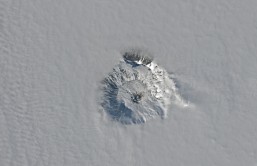University of Gothenburg researchers found that Mars had liquid water on its surface as recently as 200,000 years ago.
Water on Mars has grabbed the attention of several scientists and has also been the subject of many heated debates. In a recent study, University of Gothenburg researchers found that the Red Planet hosted liquid water as recently as 200,000 years ago.
The study led to the discovery of a crater in the planet's Southern Hemisphere, containing well-preserved gullies and debris flow deposits. Researchers said that the geomorphological attributes of these landforms provide evidence that they were formed by flowing water in the very recent past.
"We have discovered a very young crater in the southern mid-latitudes of Mars that shows evidence of liquid water in Mars' recent past," said Andreas Johnsson at the University of Gothenburg in a press statement.
When sediments are soaked with water, they become too heavy to stay in one place and start flowing. This is generally known as a debris flow. On Earth, this phenomenon is known to cause human causalities and much destruction, especially if it takes place in a populated area. During this process, a lot of gravel, stones and soil that come in the path of the flow are dislocated. When the sediment subsequently stops, it displays characteristic surface features such as lobate deposits and paired levees along flow channels.
Similar landforms were identified on Mars by Johnsson and his team. These landforms confirmed that water was present in these regions.
"Our fieldwork on Svalbard confirmed our interpretation of the Martian deposits. What surprised us was that the crater in which these debris flows have formed is so young," said Johnsson.
After analyzing crater statistics, the team concluded that the newfound crater was approximately 200,000 years old. This led to calculations suggesting that the crater had formed much after the last ice age on Mars that ended 400,000 years ago.
Researchers first thought that the water that formed the crater may have come from preserved ice within the rampart ejecta. However, a closer analysis revealed no structures such as faults or fractures in the crater that could have acted as conduits for the meltwater. This led researchers to speculate that the water may have come from melting snow packs. Johnsson confirmed that this might be possible because "the orbital axis of Mars was more tilted in the past than it is today."
"Gullies are common on Mars, but the ones which have been studied previously are older, and the sediments where they have formed are associated with the most recent ice age. Our study crater on Mars is far too young to have been influenced by the conditions that were prevalent then. This suggests that the meltwater-related processes that formed these deposits have been exceptionally effective also in more recent times," said Johnsson.
Very recently, NASA's Mars Reconnaissance Orbiter (MRO) captured images of the new gully channel on the planet that didn't exist three years ago. The new gully channel was spotted on a crater wall slope in the southern highlands of Mars and photographed May 25, 2013, using the orbiter's High Resolution Imaging Science Experiment (HiRISE) camera.
Prior to that, the HiRISE camera onboard the MRO also snapped a stunning photo of a Martian sand dune field covered in seasonal frost. The image of the sand dune field in a Southern highlands crater was acquired Jan. 24 when the Sun was just 5 degrees above the horizon.
The study was published in the international scientific journal ICARUS.








